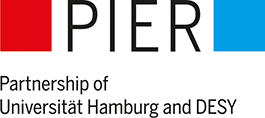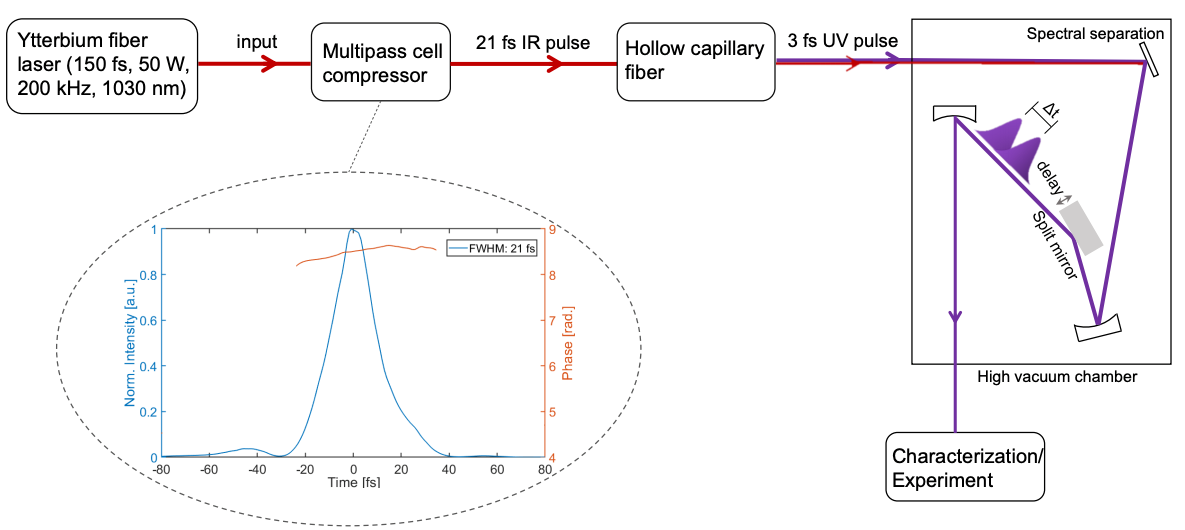PIER: HIGHLIGHT

The HIGHLIGHT project (High-repetition-rate ultraviolet beamLine for high-statistics spectroscopy at the few-femtosecond Timescale) is coordinated by Dr. Vincent Wanie.
Ultraviolet (UV) radiation has a key role in a vast range of scientific areas, including light-harvesting technologies, atmospheric chemistry and biochemistry. In laboratories, the generation and utilization of few-femtosecond UV pulses, i.e., < 5 fs, is extremely challenging, but promises to reproduce ultrafast molecular processes that occur in nature and to identify their underlying mechanisms [1]. Within the HIGHLIGHT project, we aim to exploit the recent advances of ultraviolet light sources to develop a unique UV-pump UV-probe beamline for time-resolved spectroscopy through the generation of few-cycle UV pulses at a high repetition rate (200 kHz). Such a setup will be circumventing the limited temporal resolution and signal-to-noise ratio of current state-of-the-art beamlines.
The experimental scheme includes the pulse compression of an ultrafast high-power Ytterbium fiber laser using the multi-pass cell technology, followed by the generation of ~ 3 fs UV pulses via dispersive wave emission in a gas-filled stretched hollow-core fiber. The output of the fiber is coupled to a high-vacuum chamber where a dispersion-free characterization of the ultrabroadband UV radiation, another important technological challenge, will be performed using fringe-resolved interferometric autocorrelation (FRIAC). The light source will allow UV-pump UV-probe time-resolved experiments in which the high repetition rate will be exploited for covariance spectroscopy, benefiting from high statistics. A number of applications are envisaged, notably the investigation of UV-induced dynamics in polyatomic systems such as amino-acids, DNA bases and chiral molecules.
https://www.pier-hamburg.de/funding/pier_seed_projects/funded_projects_2021/
[1] V. Wanie et al., “Advances of ultraviolet light sources: towards femtosecond pulses in the few-cycle regime” in “Emerging Laser Technologies for High-Power and Ultrafast Science”, IOP publishing (2021) 2053-2563.
